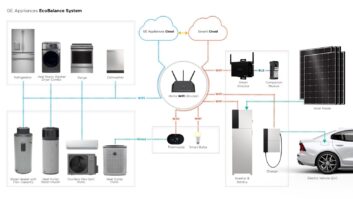There’s probably going to be a lot of new money on the consumer electronics table soon, and it resides in the form of new CE hardware called set-top boxes (STBs) and handheld devices.
However, so many forms of this hardware are coming to the marketplace that the average CE retail shelf may become so confusing, and the average retail CE salesperson so confused, consumers will reject the new STBs and handhelds-and the potential revenue will not flow back into the pockets of their local CE dealers.
Because some companies will fail to grasp the convergence trend, there will be long-term failures. At the end of a shakeout period lasting for the next five to 10 years, estimates suggest that up to 50 percent of STB makers and 80 percent of handheld device manufacturers will no longer exist (or at least not exist as we know them today).
In the meantime, get ready for a flood of new STBs and devices that will compete for the consumer CE dollar in most of the thousands of dealerships across the country.
Is there a savior? Yes. The solution comes in the form of true convergence.
Recent visits to trade group meetings and private events have highlighted this concept of convergence as it finally finds the fast new STBs and devices, and how important that will be to new revenue streams.
Every set-top box today is in effect an interactive TV and an advanced computer all in one. Along with the numerous cable and satellite STB suppliers such as Sony, Thomson, Pace, Motorola, Scientific Atlanta, Phillips and EchoStar, companies such as Microsoft, with its Ultimate TV, and American Online, with AOLTV, are leading this charge.
The result is that these new STBs allow consumers to purchase and engage with services and content as never before.
At the same time, it becomes more important that the industry not overwhelm the consumer with new hardware, which is exactly what is happening today.
In the recent alliance announced between direct-broadcast satellite provider EchoStar and over-the-air data broadcaster Geocast, for example, their venture calls for the installation of yet another STB in the precious space surrounding the TV and/or the computer. And competing for this especially lucrative space are several key companies, among them Sony, Sega, Nintendo, and soon-to-come, Microsoft.
As an example of its importance, many analysts were predicting until most recently that Sony’s new PlayStation2 set-top box was destined to overtake DVD and DBS as “the fastest growing consumer electronics product in history.” (This won’t happen within the next few quarters, or maybe never, due to Sony’s expected component shortages later this year.)
Worth noting here is that Microsoft’s X-Box is probably leading this convergence trend by having its own digital versatile disk (DVD) built into the first generation of these new game units. Future versions of Sega’s Dreamcast or Dolphin, for example, will need to keep pushing this theme of single-box simplification.
One of the best things about digital satellite radio (DSR) thus far is the ability of the two key U.S. players-XM and Sirius-to work with the government to achieve a single-box solution. Second-generation DSRs will be installed mostly in vehicles, but also in some stationary locations, and will allow consumers a choice of the two service providers from the same unit.
Having figured out and implemented this true convergence simplification, expect a lot from DSR when it comes to future revenue streams.
The big questions today become, “Which box dominates? And can the market absorb them all?”
The answer is clearly no, as too many pieces of hardware are overwhelming consumers (and retailers) and drying up revenue streams-unless the best of the CE manufacturers grasp simple convergence and simple delivery of simple devices with simple installation and simple operations, and allow consumers to avoid confusion and restore the flow of new revenue.
Jimmy Schaeffler is a subscription TV analyst at The Carmel Group, a publisher and consultant that specializes in telecommunications, computers and the media, and is based in Carmel-by-the-Sea, Calif. (www.carmelgroup.com). His e-mail address is [email protected]; phone number (831) 643-2222.













